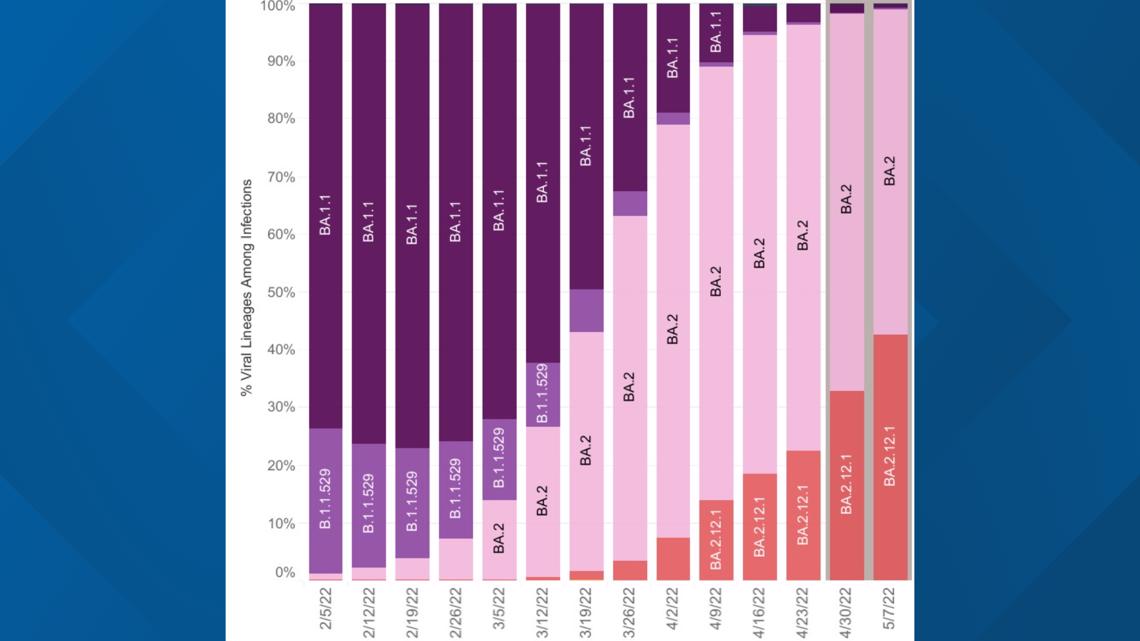CHARLOTTE, N.C. — The U.S. could soon see a new dominant strain of COVID-19, and perhaps it comes as no surprise that it is a version of omicron.
New data from the Centers for Disease Control and Prevention show BA.2.12.1, another subvariant of omicron, could soon dethrone BA.2 as the most common type of COVID-19 in the country. As of this week, BA.2.12.1 is now 43% of new cases in the U.S. and continues to gain traction. It has grown from less than 1% of cases in mid-March.
BA.2 has been the dominant variant of COVID-19 since late March.
North Carolina has started to report more BA.2.12.1 cases in recent weeks. The state variant tracker shows the last two weeks of data, which are from April, saw the subvariant making up nearly 9% of cases, with its presence trending upward.


New York state health officials flagged the subvariant as a concern last month, pegging it as the cause of a case spike there. Officials said BA.2.12.1 is 23 to 27% more contagious than the original BA.2.
North Carolina doctors also suspect it is behind the recent case increases and other rising COVID-19 metrics in the Tar Heel State.
"These variants are highly contagious as our collective immunity is selecting out variants that are more easily transmitted," Dr. David Priest, an infectious disease specialist with Novant Health, said. "We're kind of in a little mini-wave right now with BA.2 and BA.2.12.1, where we're seeing this increase. I think the expectation is that's going to be a small wave."
Priest said for now, it appears collective immunity is holding off severe disease, which is why hospitalizations are not rising nearly as quickly as cases are.
While numbers are expected to fall again through the summer, fall and winter still offer question marks, he said.
"We know that respiratory viruses, in general, tend to spread more in the fall and winter months. People are inside more. They're in groups. They have social events. So, that principle is always there," Priest said, noting the variant scene could be different then too.
Contact Vanessa Ruffes at vruffes@wcnc.com and follow her on Facebook, Twitter and Instagram.

